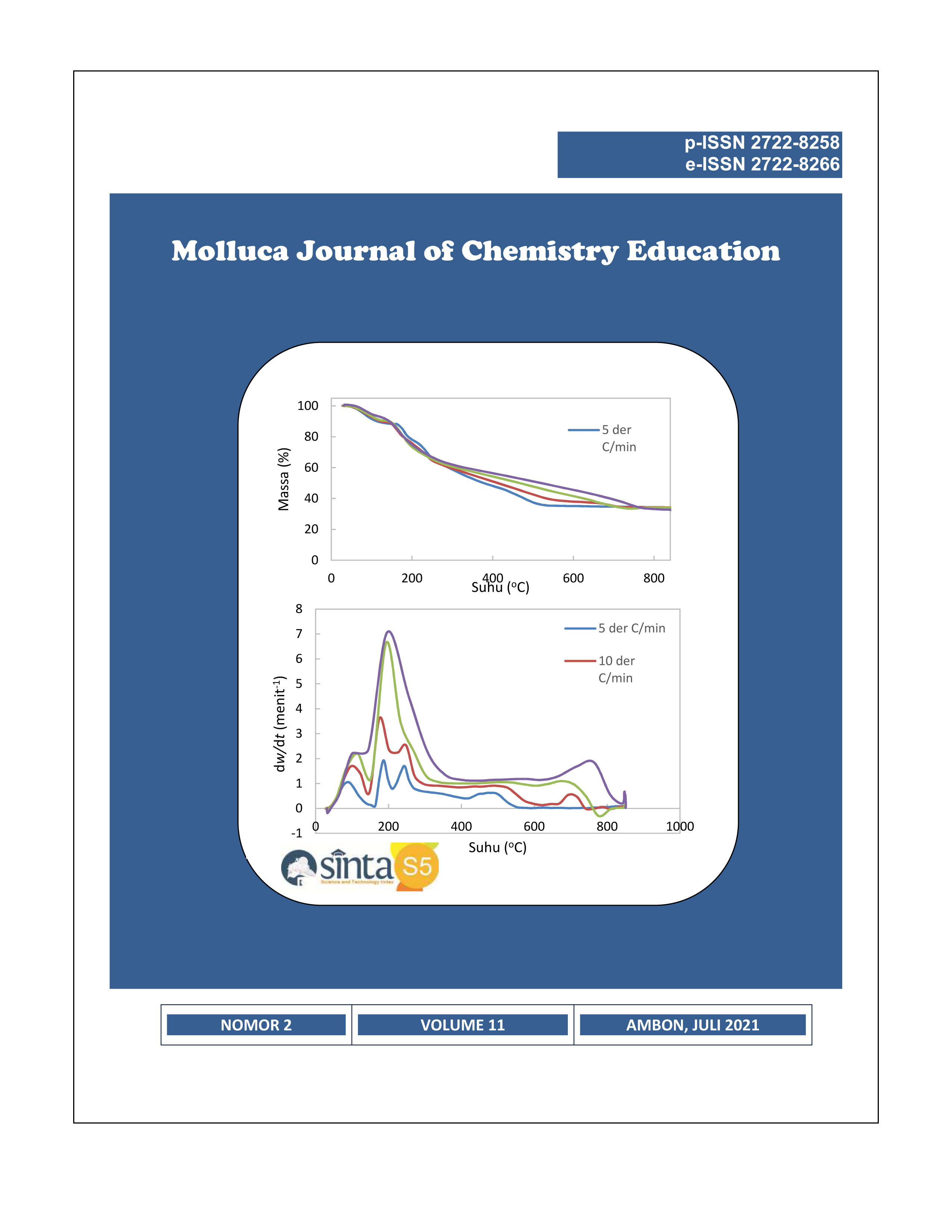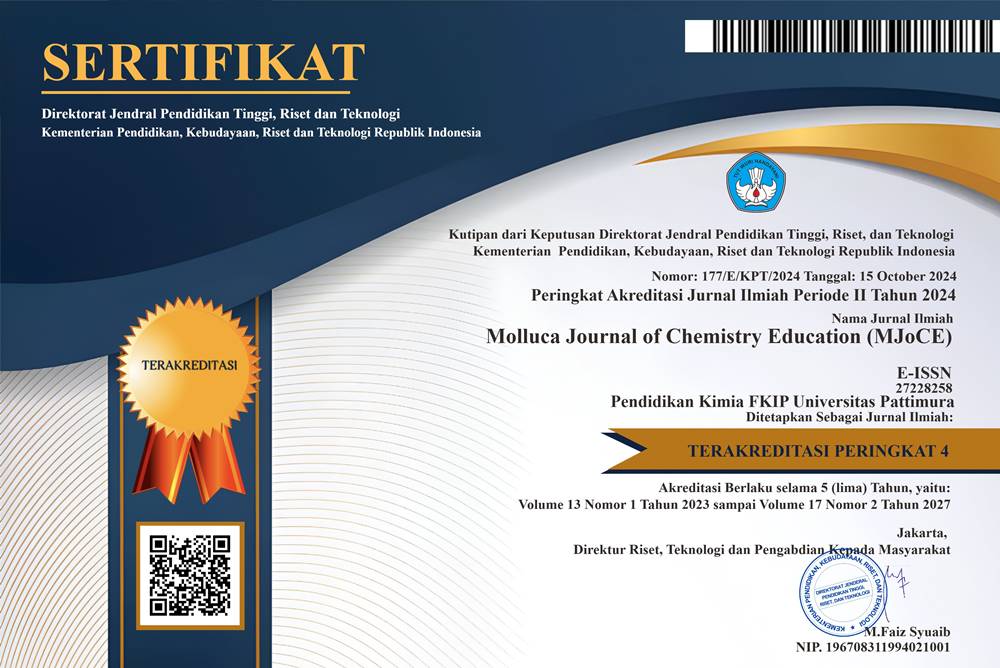SINTESIS DAN KARAKTERISASI MEMBRAN PEC KITOSAN-PEKTIN-PEGDE SEBAGAI BIOSORBEN
Abstract
Membran PEC kitosan-pektin telah banyak dimanfaatkan sebagai biosorben, tetapi membran PEC kitosan-pektin tidak tahan pada medium yang sangat asam atau basa. Pada penelitian ini dilakukan taut silang membran PEC kitosan-pektin dengan polietilen glikol diglisidil eter (PEGDE) untuk meningkatkan ketahanan membran pada medium asam atau basa serta untuk mengetahui karakteristik membran. Membran PEC kitosan-pektin-PEGDE disintesis dengan komposisi 90%:10%:30%, 80%:20%:30%, dan 70%:30%:30%.
Membran PEC kitosan-pektin-PEGDE memiliki karakteristik serapan tajam pada panjang gelombang 1604 cm-1. Membran PEC kitosan-pektin-PEGDE stabil pada pH 3-14. Membran dengan komposisi 90%:10%:30% memiliki kemampuan menyerap air paling tinggi yaitu 660 % (b/b). Sedangkan membran dengan komposisi 70%:30%:30% memiliki kemampuan mekanis yang paling baik yaitu 45,67 MPa.
Chitosan-pectin PEC membrane have been widely used as biosorbent, but chitosan-pectin PEC membrane are not resistant to highly acidic or alkaline media. In this study, cross-linking of chitosan-pectin PEC membrane with polyethylene glycol diglycidyl ether (PEGDE) was carried out to increase the resistance of the membrane in acidic or basic media and to determine the characteristics of the membrane. Chitosan-pectin-PEGDE PEC membrane were synthesized with the compositions of 90%:10%:30%, 80%:20%:30%, and 70%:30%:30%.
Chitosan-pectin-PEGDE PEC membrane has sharp absorption characteristics at a wavelength of 1604 cm-1. Chitosan-pectin-PEGDE PEC membrane was stable at pH 3-14. The membrane with a composition of 90%:10%:30% has the highest water absorption capacity of 660% (w/w). While the membrane with a composition of 70%:30%:30% has the best mechanical ability, which is 45.67 MPa.
Downloads
References
Chen, J., Spear, S. K., Huddleston, J. G., & Rogers, R. D. (2005). Polyethylene glycol and solutions of polyethylene glycol as green reaction media. Green Chemistry, 7(2), 64-82.
Crini, G., & Badot, P. M. (2008). Application of chitosan, a natural aminopolysaccharide, for dye removal from aqueous solutions by adsorption processes using batch studies: A review of recent literature. Progress in polymer science, 33(4), 399-447.
Kurniasih, M., Riapanitra, A., & Rohadi, A. (2016). Adsorpsi Rhodamin B dengan Adsorben Kitosan Serbuk dan Beads Kitosan. Sains & Matematika, 2(2).
Silitonga, F. S. (2019). Fabrication of Complex Polyelectrolyte Membrane of Chitosan-Pectin Crosslinked as Bioadsorbent. Journal of Chemical Natural Resources, 1(2), 52-59.
Tanasale, M. F., Killay, A., & Laratmase, M. S. (2012). Kitosan dari limbah kulit kepiting rajungan (Portunus sanginolentus L.) sebagai adsorben zat warna biru metilena. Jurnal Natur Indonesia, 14(1), 165-171.
Van Wagner, E. M., Sagle, A. C., Sharma, M. M., La, Y. H., & Freeman, B. D. (2011). Surface modification of commercial polyamide desalination membranes using poly (ethylene glycol) diglycidyl ether to enhance membrane fouling resistance. Journal of Membrane Science, 367(1-2), 273-287.
Vasylieva, N., Barnych, B., Meiller, A., Maucler, C., Pollegioni, L., Lin, J. S., ... & Marinesco, S. (2011). Covalent enzyme immobilization by poly (ethylene glycol) diglycidyl ether (PEGDE) for microelectrode biosensor preparation. Biosensors and Bioelectronics, 26(10), 3993-4000.
Copyright (c) 2021 Molluca Journal of Chemistry Education (MJoCE)

This work is licensed under a Creative Commons Attribution-NonCommercial-ShareAlike 4.0 International License.





